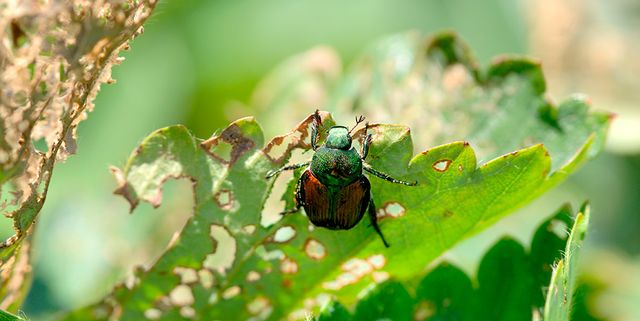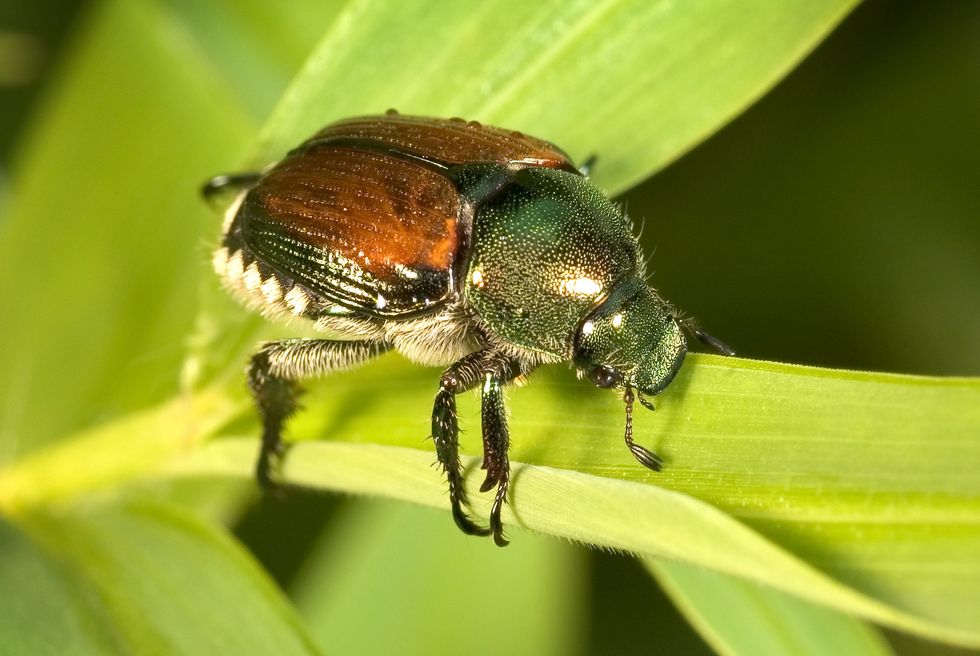Eastern gardeners are all too familiar with how Japanese beetles (Popillia japonica) skeletonize leaves and demolish plants, especially roses and grapes. Even the larvae feed on organic matter and grass roots, potentially causing a great deal of damage to your lawn.
Help protect your precious vegetables against these persistent insects with the tips below.
How to Identify Japanese Beetles
Japanese beetles live in all states east of the Mississippi River. You can recognize the adults easily: They have metallic blue-green bodies about 1/2-inch long, with bronze wing covers, long legs, and fine hairs covering the thorax.
Larvae are fat, dirty white grubs with brown heads often found in sod. They grow up to 3/4 inch long. Many other species produce C-shaped white larval grubs, so make sure you've actually got Japanese beetles and not some other helpful insect species before waging war.
The grubs move from deep in the soil toward the surface in the spring to eat roots, pupating in early summer. Adults then emerge, feed on the plants, and lay eggs in late summer. Finally, their eggs hatch into larvae that overwinter in soil. One generation occurs every one to two years.
The damage you're noticing can also help you identify Japanese beetles. Adults munch on flowers and skeletonize leaves of a broad range of plants. They also feed on fruit such as raspberries and plums, opening a site for disease infection. Larvae feed on the roots of lawn grasses and garden plants.
How to Control Them
If your problem is with adult beetles, pick off or knock the beetles from plants into a bucket of soapy water. Don't bother investing in those beetle bag traps. They tend to attract more beetles to your yard than otherwise would have been there. If necessary, spray plants with an insecticidal soap, and as a last resort try neem oil.
As for the grubs, parasitic nematodes (Heterorhabditis spp.) prey on them, says David Shetlar, Ph.D., extension entomologist at Ohio State University. Apply nematodes to the soil in late August or early September, Dr. Shetlar advises, and make sure that the nematode product is fresh and the soil is kept continuously moist after it is applied. (He does not recommend the milky disease spore products often used to control grubs in lawns.)
If you've had problems with Japanese beetles in the past, you'll want to think ahead. Cover garden vegetables with floating row covers by mid-June to keep the beetles off, or spray fruit and vegetable plants with kaolin clay. And let your lawn go dormant in summer, Dr. Shetlar urges. Watering to keep the lawn green, he says, "is just begging for white grub problems!"














